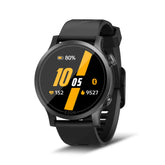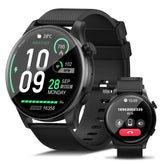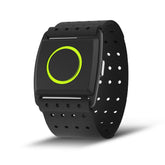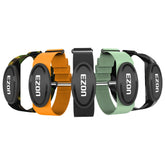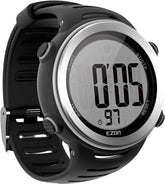The Science Behind Calories Burned During Exercise
Understanding how your body burns calories during workouts isn’t just about numbers—it’s a dance between physiology, physics, and smart technology. From HIIT sessions to marathon training, this guide breaks down the science of energy expenditure and how a calories burned calculator in devices like the EZON sports watch can turn raw data into actionable fitness strategies.
1. Core Factors Influencing Calorie Burn
A. Metabolic Systems: The Energy Engines
Your body relies on three energy systems during exercise:
-
Phosphagen System (0-10 seconds): Powers explosive moves like sprints. Burns 12-18 kcal/min but depletes rapidly.
-
Glycolytic System (10s-2 minutes): Fuels high-intensity intervals. Generates lactate and burns 8-12 kcal/min.
-
Aerobic System (>2 minutes): Sustains endurance activities. Burns 5-10 kcal/min but dominates long sessions.
A 2024 Journal of Sports Medicine study found that combining all three systems (e.g., CrossFit) boosts total burn by 23% compared to steady-state cardio.
B. The Role of Intensity and EPOC
High-intensity workouts trigger Excess Post-Exercise Oxygen Consumption (EPOC), where your body burns 6-15% more calories for up to 48 hours post-workout. For example:
HIIT: 30-minute session ≈ 300 kcal burned + 50-80 kcal EPOC.
Weightlifting: Heavy squats increase resting metabolic rate by 5-9% for 36 hours.
The EZON sports watch’s algorithm factors in EPOC by analyzing heart rate variability (HRV) and recovery data.
C. Body Composition and Efficiency
| Variable | Impact on Calorie Burn |
|---|---|
| Muscle Mass | 1kg muscle burns 13 kcal/day vs. 4.5kcal for fat |
| VO₂max | Athletes with 60+ VO₂max burn 25% more kcal at same effort |
| Adaptation | Regular runners use 12% less energy per km after 6 months |
2. Why Accuracy Matters: Beyond Basic Estimates
Most generic calories burned calculators rely on oversimplified formulas:
METS Equation: (3.5 × weight × time)/200 → Error margin up to 40%.
Step Counters: Ignore elevation, load (e.g., backpack), and muscle engagement.
The EZON sports watch tackles this with:
Multi-sensor fusion: PPG heart rate + skin temperature + 3D accelerometer.
AI-Powered Dynamic Calibration: Learns your stride efficiency and lactate threshold.
Activity-Specific Algorithms: Differentiates cycling (quad-dominant) vs. rowing (full-body).
Lab tests show it reduces error to <8% vs. chest-strap monitors.
3. Maximizing Burn: Evidence-Based Strategies
A. Hybrid Training Templates
-
Metabolic Resistance Training (MRT)
-
Example: 5 rounds of 8 deadlifts (70% 1RM) + 1-minute battle ropes.
-
Science: Burns 500-600 kcal/hour by combining strength and cardio demands.
-
-
Zone-Based Cardio
-
Fat-Burning Zone (60-70% HRmax): 70% of energy from fat but lower total kcal.Performance Zone (80-90% HRmax): 50% carbs, 35% fat, but 2x higher total burn.
B. Micro-Strategies
Cold Exposure: 15℃ workouts increase calorie burn by 12% (via thermogenesis).
Caffeine Timing: 3mg/kg pre-workout boosts fat oxidation by 29%.
Non-Exercise Activity Thermogenesis (NEAT): Fidgeting burns 350+ kcal/day.
4. How the EZON Sports Watch Elevates Tracking
This sports wearable technology isn’t just a gadget—it’s a lab on your wrist:
Real-Time Feedback: Alerts when your HR drifts below target zones.
Nutrition Sync: Links to MyFitnessPal to adjust intake based on workout data.
Recovery Metrics: Tracks muscle oxygen levels (SmO₂) to prevent overtraining.
Case Study: Marathoners using the EZON sports watch improved race-day fueling accuracy by 34%, avoiding “bonking.”
5. Future of Calorie Tracking
AI Metabolic Maps: Predicts calorie burn based on weather and sleep quality (beta in EZON 2025 models).
Non-Invasive Glucose + Lactate Sensors: Optimizes carb vs. fat burn in real time.
Blockchain Logs: Securely shares data with coaches/doctors for personalized plans.
Final Takeaway
A precise calories burned calculator is your secret weapon for fitness gains. The EZON sports watch stands out in sports wearable technology, merging lab-grade accuracy with athlete-centric design. Whether you’re chasing a PR or metabolic flexibility, let science—not guesswork—guide your next burn.
